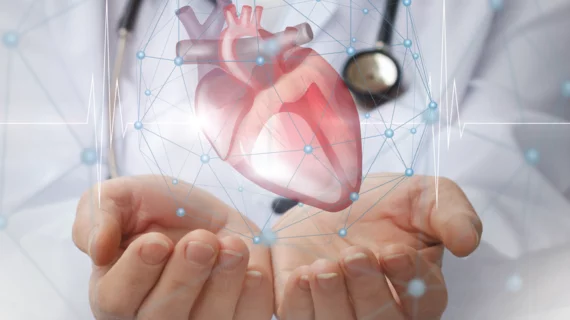Blood travels differently through women’s and men’s hearts, 4D MRI shows
The old saying that men are from Mars and women are from Venus has taken on new meaning, thanks to recent imaging research.
By analyzing 4D flow MRI data, researchers found that healthy men and women have very different cardiac blood flow characteristics. The study—published Feb. 27 in Radiology: Cardiothoracic Imaging—may help clinicians adjust the quantitative standards used to assess how a patient’s heart is functioning.
“Using the MRI data, we found differences in how the heart contracts in men and women,” lead author David R. Rutkowski, PhD, postdoctoral researcher at the University of Wisconsin in Madison, said in a statement. “There was greater strain in the left ventricle wall of women and a higher vorticity in the blood volume. We hypothesize that these two things are related.”
Cardiac differences between the two genders are well-known, the authors said. Women have smaller hearts that beat quicker than men’s, on average. When it comes to how the blood flows through this precious organ, however, the research is a little less clear.
For their study, Rutkowski and colleagues used 4D MRI to analyze differences in the heart’s main pumping chamber—the left ventricle—in 20 men and 19 women. A number of blood flow measurements were gathered and compared to the patient’s heart function.
After correlating the data, the UW-Madison investigators found “significant” differences between the genders. In men, for example, the left ventricle expends much more energy to contract the heart and fill it with blood, compared to women. And vorticity, which measures regions of “rotating flow” that arise as the heart moves from one beat to the next was higher in women. Heart strain, which is a common measure used to determine ventricular function, was also greater in women, the team noted.
Rutkowski and co-investigators believe this information can be useful in a number of situations. It could help medicine understand why men and women respond differently to physiological stresses and disease, for example. Such insights may even help improve how cardiologists assess a patient’s heart.
There’s been a “push” to make MRI data more quantitative, Rutkowski said, and these new findings allow them to be more scientific. Instead of analyzing a patient and saying that something looks “normal or different,” clinicians can use more granular data.
All in all, this research will help the field advance MRI in the right direction, the team agreed.
“The goal of our work in general is to move from qualitative MRI to more quantitative MRI,” Rutkowski said. “Getting blood flow and velocity information is just one more metric that is being developed to make MRI more quantitative.”

